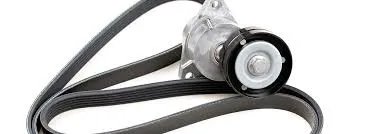- Arabic
- French
- Russian
- Spanish
- Portuguese
- Turkish
- Armenian
- English
- Albanian
- Amharic
- Azerbaijani
- Basque
- Belarusian
- Bengali
- Bosnian
- Bulgarian
- Catalan
- Cebuano
- Corsican
- Croatian
- Czech
- Danish
- Dutch
- Afrikaans
- Esperanto
- Estonian
- Finnish
- Frisian
- Galician
- Georgian
- German
- Greek
- Gujarati
- Haitian Creole
- hausa
- hawaiian
- Hebrew
- Hindi
- Miao
- Hungarian
- Icelandic
- igbo
- Indonesian
- irish
- Italian
- Japanese
- Javanese
- Kannada
- kazakh
- Khmer
- Rwandese
- Korean
- Kurdish
- Kyrgyz
- Lao
- Latin
- Latvian
- Lithuanian
- Luxembourgish
- Macedonian
- Malgashi
- Malay
- Malayalam
- Maltese
- Maori
- Marathi
- Mongolian
- Myanmar
- Nepali
- Norwegian
- Norwegian
- Occitan
- Pashto
- Persian
- Polish
- Punjabi
- Romanian
- Samoan
- Scottish Gaelic
- Serbian
- Sesotho
- Shona
- Sindhi
- Sinhala
- Slovak
- Slovenian
- Somali
- Sundanese
- Swahili
- Swedish
- Tagalog
- Tajik
- Tamil
- Tatar
- Telugu
- Thai
- Turkmen
- Ukrainian
- Urdu
- Uighur
- Uzbek
- Vietnamese
- Welsh
- Bantu
- Yiddish
- Yoruba
- Zulu
Nov . 08, 2024 16:14 Back to list
v belt transmission
V-Belt Transmission Fundamentals and Applications
V-belt transmission systems are widely utilized in various mechanical applications due to their efficiency, reliability, and simplicity. Composed of a V-shaped belt fitted between two pulleys, this transmission method plays a pivotal role in transferring power from one component to another, making it essential in diverse industries ranging from automotive to manufacturing.
Basics of V-Belt Transmission
The core components of a V-belt transmission include the V-belt itself and two pulleys the driving pulley and the driven pulley. The V-belt's profile allows it to fit snugly into the groove of the pulleys, which aids in providing a high coefficient of friction. This characteristic minimizes slippage during operation and ensures a stable transfer of power.
One of the essential aspects of V-belt systems is that they can accommodate misalignments to a certain extent. The design allows for a flexible connection, which aids in reducing wear and tear on the components in the case of minor misalignments. This makes V-belt transmissions appealing for installations where precise alignment is challenging to achieve.
Advantages of V-Belt Transmission
1. Efficiency V-belts exhibit low energy loss, with efficiencies generally ranging from 90% to 98%. This high efficiency leads to reduced operational costs, making them an economically appealing option for many applications.
2. Simplicity The structure of a V-belt system is straightforward, which contributes to easier installation and maintenance. Unlike gear systems, V-belt transmissions often require less precision in alignment, allowing for faster setup times.
3. Quiet Operation Compared to chain drives or gear systems, V-belt transmissions operate quieter. This feature is particularly beneficial in applications where noise reduction is a priority, such as in residential or office equipment.
v belt transmission

4. Load Distribution The wide surface area of the V-belt allows it to distribute the load evenly across its length, reducing the likelihood of failure under stress. This characteristic enhances the reliability of the system over time.
5. Cost-Effectiveness V-belts are generally less expensive to purchase and replace compared to other power transmission systems. Their routine maintenance typically involves checking tension and alignment, contributing to lower operational expenses.
Applications of V-Belt Transmission
V-belt transmissions find their applications in numerous fields. In the automotive industry, they are commonly used in fan drives, alternators, and power steering systems. The adaptability of V-belts allows for efficient transfer of power from the engine to various peripheral components.
In industrial settings, V-belt systems are prevalent in conveyor belts, compressors, and machine tools. They can accommodate variable loads and are often used in situations where equipment may experience fluctuating demands. For example, in manufacturing plants, machines that undergo cycles of high and low energy consumption can benefit from the flexibility of V-belt drives.
Agricultural machinery also heavily relies on V-belt transmission systems. Tractors and other agricultural equipment utilize V-belt drives to power various implements, from tillers to harvesters. The robustness and durability of V-belts are ideal for the challenging conditions often encountered in agricultural settings.
Conclusion
In conclusion, V-belt transmission systems serve as a backbone for many mechanical operations across various industries. Their efficiency, reliability, and cost-effectiveness, combined with a relatively simple design, make them an attractive choice for powering machinery. As technology advances, the materials and designs for V-belts continue to evolve, ensuring that they remain a vital component in modern engineering and manufacturing processes. Whether in automobiles, industrial machinery, or agricultural equipment, the versatility of V-belt transmissions underscores their importance in the mechanics of power transfer. Understanding their functionality and applications can help engineers and technicians make informed choices that enhance performance and efficiency in their respective fields.
-
Upgrade Power Steering Pump Belt for Smooth, Quiet Operation
NewsAug.27,2025
-
Precision Timing Belt & Chain: Engine Performance & Durability
NewsAug.26,2025
-
Precision Lathe Drive Belts: Durable & Reliable Performance
NewsAug.25,2025
-
84.5 Serpentine Belt: Durable & Precision Fit for Your Engine
NewsAug.24,2025
-
Premium Ribbed Drive Belts for Quiet Power Transmission
NewsAug.23,2025
-
High-Performance Vehicle Timing Belt for Engine Precision
NewsAug.22,2025

